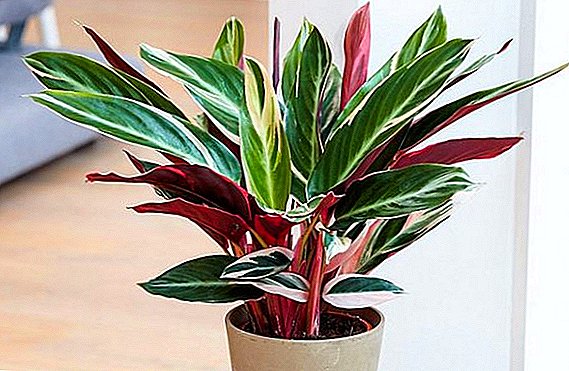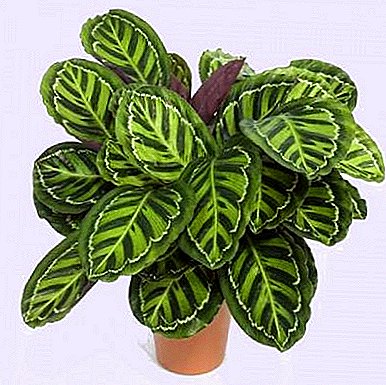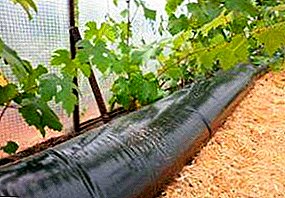
With efficient heating, the greenhouse is quite capable of performing its functions even in extreme cold.
However, it rises question of the cost of winter operation, because the current prices for energy look pretty depressing.
However, there are ways to more fully use a completely free resource - solar energy.
What does the accumulation of heat?
The work of the greenhouse is based on the entry into the shelter of solar energy and its accumulation there due to properties of covering materials. However, even in winter, the amount of this energy far exceeds the needs of plants. The surplus is simply reflected in the space and does not bring any benefit from it.
If you apply accumulation of solar heat in the greenhouse, then the resulting reserves can then be successfully used in it for heating. The benefits are obvious.: the temperature in the greenhouse is maintained at the desired level without the consumption of expensive energy for artificial heating.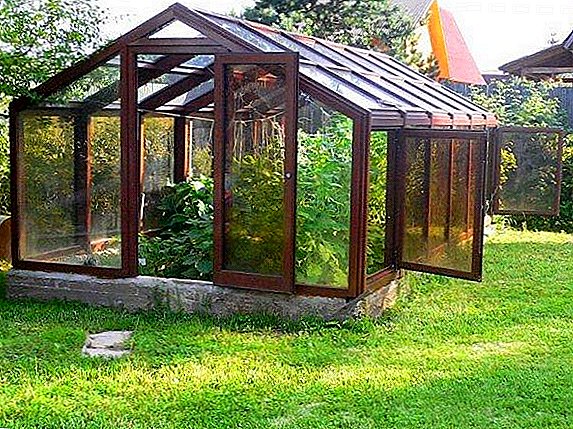
Thermal Battery Options
Heat accumulators for greenhouses - a device for the accumulation of solar heat. They are divided according to the materials from which they are made. main element - heat accumulator.
Water heat accumulators
This happens due to the fact that solar energy is not able to penetrate through a large water column and heats the battery only from above and near the walls. The remaining water remains cold for a long time.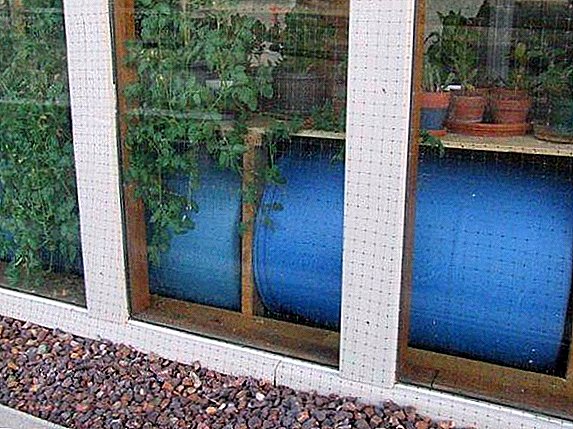
It is possible to improve the efficiency of heating by installing a large number of small closed water heat accumulators. They should be placed evenly over the entire area of the greenhouse. This will allow them to warm up faster, and in the future - to give more heat evenly.
Open water batteries have one important feature.: their efficiency depends on the air volume above the pool. The water heated by the sun will inevitably evaporate, taking away the necessary heat. The process of evaporation will continue the longer, the more dry air will be available. Therefore it makes sense cover the pool with foil, thereby getting rid of energy consumption on the evaporation of water.
IMPORTANT! If you paint the container from the inside with black paint, this will speed up the heating of water many times.
If you abandon self-made and buy a ready-made solution, then a water-cooled heat accumulator with a capacity of about 300 liters and with an internal heat exchanger will cost around 20,000 rubles. A model for 2000 liters can cost from 55,000 rubles or more.
Ground heat accumulation
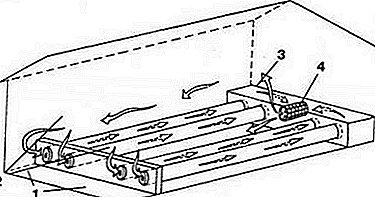 The soil in any greenhouse can also accumulate heat in itself so that after sunset it can be used for heating.
The soil in any greenhouse can also accumulate heat in itself so that after sunset it can be used for heating.
In the daytime, the soil is simply warmed up by the sun’s rays, absorbing their energy. At night, the following occurs.:
- inside horizontal pipes laid in warm soil gradually heats up;
- warm air begins to move toward a higher vertical pipe, where the thrust is greater. The air coming out of this pipe just warms the greenhouse;
- through the low vertical pipe under the ground, the air that has time to cool down enters and the cycle repeats.
Stone batteries heat
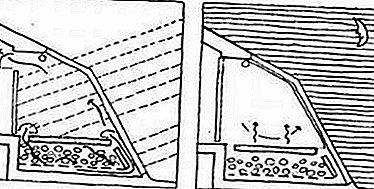 Natural stone has a significantly heat capacity, which allows it to be used in greenhouses as a heat accumulator.
Natural stone has a significantly heat capacity, which allows it to be used in greenhouses as a heat accumulator.
More often stone lay out the rear wall of the greenhouseavailable for sunlight. In the simplest case, a stone heat accumulator is a wall of a greenhouse lined with stone.
More complex options involve laying or pouring the stone in several layers. However in this case battery should be equipped with a fan to create air circulation inside the masonry. It improves heat removal.
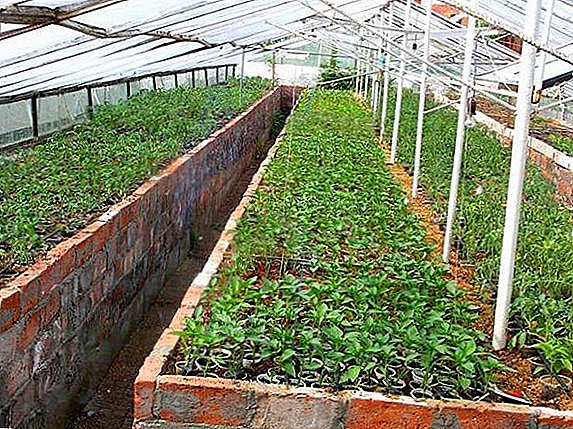
Solar greenhouse air collector
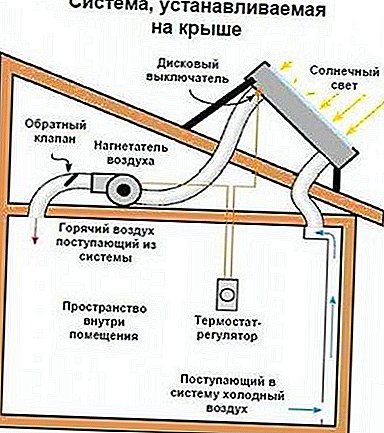 Another device that allows more complete use of solar energy during heating is the solar collector for the greenhouse.
Another device that allows more complete use of solar energy during heating is the solar collector for the greenhouse.
Its main element is a heat exchanger.in which air from the greenhouse circulates.
There are solar panels for the greenhouse outside so that their plane was how can more perpendicular rays of sunlight.
This will avoid the reflection of rays and will provide almost complete transfer of their energy into heat. From the heat exchanger air enters the heated greenhouse.
After transferring heat to the soil and plants, the cooled air enters the heat exchanger and reheating greenhouses solar panels.
Heating a greenhouse with a solar collector differs in many ways from the use of heat accumulators:
- the collector only works during the daytime;
- without an additional heating system at night, the heating of the greenhouse by the solar collector is impossible;
- the collector is not able to accumulate thermal energy. He only distributes it more effectively.
Battery heat for the greenhouse do it yourself
It is almost impossible to place such a heater in an already finished greenhouse. Therefore, it is necessary to create it before the construction of the frame. The sequence of actions here will be as follows:
- over the entire area of the greenhouse a ditch about 30 cm deep is dug. At the same time, you should take care of the safety of the upper layer with humus. Fertile soil is still useful in the greenhouse itself, and for other garden work;
- either coarse sand or fine crushed stone is poured at the bottom of the pit. After filling the 10 cm layer, the surface is thoroughly rammed. Sand pillow will allow condensate to escape into the lower layers of the soil, without causing waterlogging;
- A system of horizontal air ducts is being formed. They should be located along the beds. Plastic is convenient to use as a material for manufacturing. sewer pipes with a diameter of 110 mm. If necessary, they can be combined into the desired configuration through tees and crosses;
- it is recommended to install fans in the inlet and outlet pipes (taking into account the air flow direction). For the version with natural circulation will have exhaust pipes do a higher height than input.
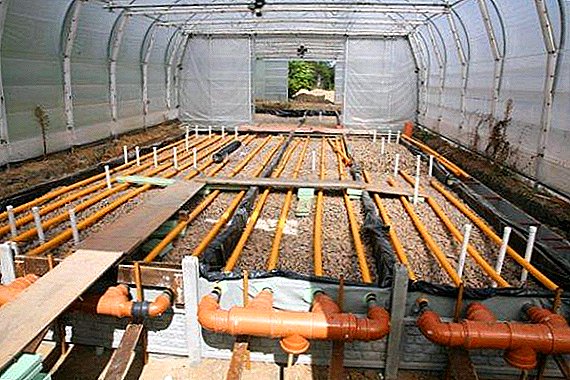
The use of solar thermal energy storage in greenhouses allows you to significantly reduce costs on its content. At the same time, the cost of materials is fully paid off with an additional crop, and there are no costs for specialists at all, since everything can be done by hand.






